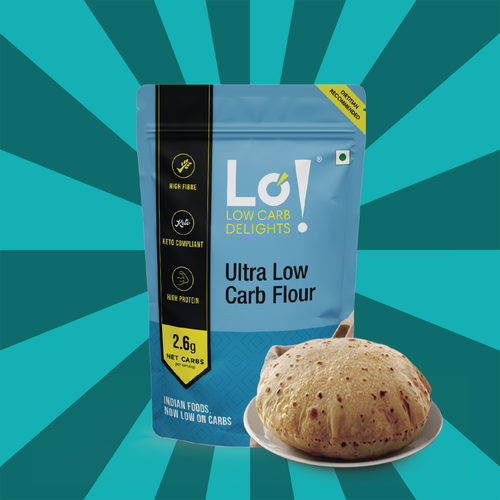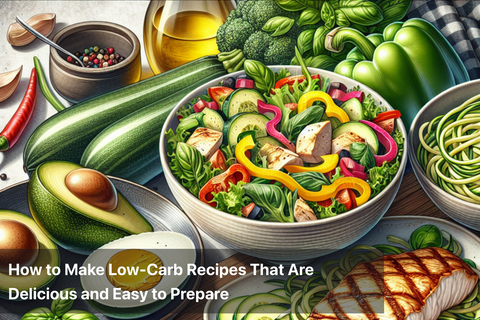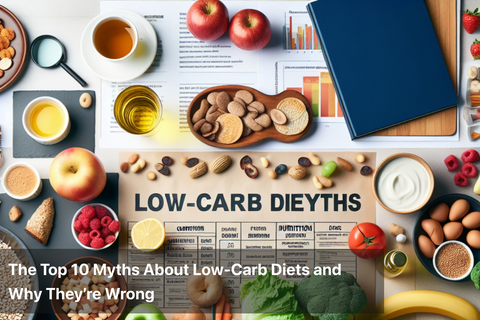
Low-Carb Diet and Intermittent Fasting: How to Combine Them for Better Results
Combining a low-carb diet with intermittent fasting has gained traction as a powerful strategy for improving metabolic health, enhancing fat loss, and boosting energy. Both approaches work individually by influencing insulin sensitivity, fat metabolism, and appetite regulation. When practiced together, they can create a synergistic effect that amplifies results and promotes long-term well-being.
A low-carb diet limits the intake of carbohydrates, focusing instead on protein, healthy fats, and fiber-rich vegetables. Intermittent fasting (IF), on the other hand, involves cycling between periods of eating and fasting, allowing the body to rest from constant digestion and encouraging it to tap into fat stores for energy. When aligned correctly, this combination can unlock benefits beyond weight loss, such as hormonal balance, improved mental clarity, and reduced inflammation.

Why This Combination Works
Both low-carb eating and intermittent fasting aim to stabilize blood sugar and lower insulin levels—two critical factors that influence fat storage and energy use. High insulin levels, often triggered by frequent carb-heavy meals, prevent the body from efficiently burning fat. A low-carb diet reduces insulin secretion, and intermittent fasting extends the period during which insulin remains low, encouraging fat mobilization.
Benefits of Combining Low-Carb and Intermittent Fasting
-
Accelerated Fat Loss: Reducing carbs lowers insulin, and fasting allows the body to access stored fat for fuel more efficiently.
-
Enhanced Mental Focus: Ketones produced during low-carb intake and fasting can serve as a stable energy source for the brain.
-
Reduced Cravings: Stable blood sugar from low-carb eating curbs hunger, making fasting periods easier to sustain.
-
Improved Digestive Health: Limiting meal frequency gives the digestive system a break, improving gut function and reducing bloating.
-
Better Hormonal Balance: Lower insulin, along with balanced cortisol and improved leptin sensitivity, contributes to hormonal regulation.
-
Increased Energy Levels: As the body becomes fat-adapted, energy dips and post-meal sluggishness tend to decrease.
Common Mistakes and How to Avoid Them
While this combination is powerful, common missteps can derail progress. Awareness of these mistakes can help fine-tune the approach.
|
Mistake |
Reason |
Correction |
|---|---|---|
|
Eating too little during eating window |
May lead to nutrient deficiencies and fatigue |
Ensure meals are nutrient-dense and calorically sufficient |
|
Breaking fast with high-carb foods |
Spikes blood sugar and increases hunger |
Break fast with protein, healthy fats, and fiber |
|
Not staying hydrated |
Fasting may increase fluid loss |
Drink water, herbal teas, and consider electrolytes |
|
Over-restricting calories |
Can lead to hormone disruption and low metabolism |
Focus on nourishment, not starvation |
|
Using processed “keto” foods |
May contain hidden sugars and unhealthy fats |
Choose whole, clean foods over packaged options |
Signs You’re Doing It Right
When the body adapts well to a low-carb and intermittent fasting routine, several positive changes become noticeable:
|
Symptom/Sign |
Meaning |
|---|---|
|
Stable energy throughout the day |
Improved fat metabolism and blood sugar regulation |
|
Fewer cravings |
Balanced insulin and leptin response |
|
Better sleep and mood |
Reduced inflammation and hormone balance |
|
Clearer skin |
Lowered insulin and reduced sugar intake |
|
Improved focus |
Brain fueled by ketones and steady glucose levels |
Understanding the Role of Insulin and Glucagon
To fully grasp the benefits of combining low-carb and IF, it helps to understand two key hormones: insulin and glucagon.
-
Insulin is released in response to carbohydrate intake and promotes fat storage. Constant high insulin levels inhibit fat loss.
-
Glucagon works in opposition, helping release stored fat and glucose when insulin is low, such as during fasting or carb restriction.
By maintaining low insulin through low-carb meals and extending fasting windows, glucagon can do its job effectively—burning fat, maintaining blood sugar, and fueling the body during fasting periods.
Popular Intermittent Fasting Patterns Compatible with Low-Carb Diets
|
Fasting Pattern |
Fasting Hours |
Eating Window |
Best For |
|---|---|---|---|
|
16:8 |
16 hours |
8 hours |
Beginners, sustainable long term |
|
18:6 |
18 hours |
6 hours |
Moderate fat loss, improved focus |
|
OMAD (One Meal a Day) |
23 hours |
1 hour |
Advanced users, breaking weight plateaus |
|
5:2 |
2 days/week (500-600 kcal) |
Normal eating other 5 days |
Flexibility with weekly routine |
Symptoms That May Indicate Imbalance
While most people benefit from this combination, certain symptoms can indicate the need for adjustment.
|
Symptom |
Potential Cause |
Suggested Fix |
|---|---|---|
|
Headaches or dizziness |
Electrolyte imbalance or dehydration |
Add salt, magnesium, and potassium-rich foods |
|
Fatigue or irritability |
Not eating enough during the eating window |
Prioritize nutrient density and adequate calories |
|
Cold hands and feet |
Slowed metabolism from prolonged calorie restriction |
Reassess meal volume and fasting duration |
|
Hormonal disruption (in women) |
Over-fasting or low body fat |
Shorten fasting window or increase carb intake |
|
Sleep disturbances |
Low evening blood sugar or late caffeine intake |
Break fast earlier in the day, avoid stimulants late |
Who Should Avoid or Modify This Combination
While the low-carb and IF duo works well for many, certain individuals should proceed cautiously or under medical supervision:
-
Pregnant or breastfeeding women
-
People with a history of eating disorders
-
Individuals with thyroid or adrenal issues
-
Underweight individuals or those with very low body fat
-
Those on medications for diabetes or blood pressure

Sample Day Combining Low-Carb and Intermittent Fasting (16:8)
|
Time |
Activity/Meal |
|---|---|
|
7:00 AM |
Hydration (water, herbal tea) |
|
12:00 PM |
First meal: Grilled chicken, avocado salad, nuts |
|
4:00 PM |
Snack: Greek yogurt with chia seeds |
|
7:30 PM |
Final meal: Paneer stir-fry, sautéed greens |
|
8:00 PM–12:00 PM |
Fasting window begins |
Summary
Combining a low-carb diet with intermittent fasting creates a metabolic environment that encourages fat loss, hormonal balance, and sustained energy. By lowering insulin levels, supporting fat burning, and optimizing eating windows, this approach can enhance physical and mental performance. Attention to hydration, food quality, and individual needs ensures a balanced and safe experience.
Lofoods makes this lifestyle easier and more enjoyable with a wide range of clean, low-carb essentials that support your goals—whether you're fasting, feasting, or simply focusing on better health. Align your plate with your purpose and let food fuel your transformation.
This Blog post is an initiative by Lo! Foods, to provide accurate and Nutritionist / Doctor approved information related to Health. Lo! Foods is India's leading brand for Everyday Functional Foods. Foods designed for specific Health conditions or Needs. Lo! Foods also runs India's largest range of Low Carb Healthy Cloud Kitchens, under the brand names of Lo!, ProteinChef, ATH (All Things Healthy) and DiabeSmart.















Leave a comment
Your email address will not be published.